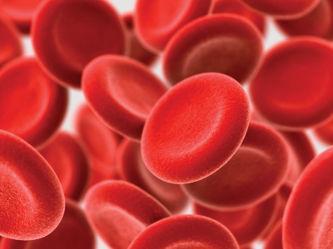| Z.S. Tan, MD, MPH; W.S. Harris, PhD; A.S. Beiser, PhD; R. Au, PhD; J.J. Himali, MS; and 7 more. This study was done at Boston University School of Medicine. Docosahexaenoic acid = DHA |
KEY POINTS FROM THIS STUDY:
1. “Higher fish intake has been associated with a reduced risk of cardiovascular mortality and stroke.”
2. In an earlier Framingham cohort study, participants in the top quartile of plasma docosahexaenoic acid (DHA) levels had 47% lower risks of Alzheimer’s disease (AD) and all-cause dementia.
3. This study related RBC fatty acid composition to subclinical markers of future dementia. “We related RBC omega-3 fatty acid levels to recognized MRI and cognitive markers of subclinical AD and vascular pathology and of risk for dementia in a large, community-based sample.”
A. The brain MRI assessment included:
- Brain volume
- White matter hyperintensity volume
B. The cognitive evaluation included:
- Neuropsychological assessment, including recall time, verbal memory, visuospatial memory, abstract reasoning skills, etc.
4. “We found that lower levels of RBC, DHA and EPA in late middle age were associated with markers of accelerated structural and cognitive aging.” [Key Point]
5. “Fatty acids are integral components of biological membranes, and influence membrane fluidity, ion transport, and other functions. The neuronal cell membrane is no exception; the CNS has the highest concentration of phospholipids in the body.”
6. The omega-3 PUFA DHA is “very inefficiently synthesized from shorter-chain dietary precursor alpha-linolenic acid” and therefore is best obtained preformed from the diet. [Important for strict vegetarians]
7. “The biosynthesis of EPA and DHA from their precursor alpha-linolenic acid appears to decrease with age.”
8. Dietary intake of fatty fish is the main source of the omega-3s DHA and EPA.
9. “DHA and EPA exert several favorable effects on the vasculature, including blood pressure reduction, lowering the risk of thrombosis, reducing inflammation, and lowering serum triglyceride levels. Since vascular risk factors, cerebral atherosclerosis, and stroke have been associated with a higher risk of incident dementia, omega-3 PUFAs may delay cognitive and structural brain aging by some combination of these mechanisms.”
10. The omega-3 PUFAs influence membrane function and the activities of membrane-bound proteins. [Very Important]
11. Omega-3 PUFAs may be “directly linked to the neurodegenerative pathogenesis of AD, including reduction of amyloid-B production, synaptic protection by reducing neuroinflammation and oxidative damage, by increasing levels of brain derived neurotrophic factor, and through reduction of potentially excitotoxic arachidonic acid (omega-6) levels.”
COMMENTS FROM DAN MURPHY
This study adds to the evidence that preformed long-chain EPA and DHA omega-3 fatty acids are crucial for brain function. For years I and many colleagues have routinely tested patient RBC levels of EPA and DHA, and our findings are very concerning: our average patients are critically low in these essential fatty acids.
Healthcare costs are threatening to bankrupt our nation. It is projected that my generation, the Baby Boomers (born 1946-1964), will give our nation nearly 14 million cases of Alzheimer’s Disease; the cost of managing Alzheimer’s alone is projected to exceed $1 trillion per year, creating an unconceivable burden on our citizens. It is imperative for ourselves, our families, our patients and our nation for each of us to consume adequate levels of long-chain preformed EPA and DHA omega-3 fatty acids, and it is easy to do: supplement.
Dr. Dan Murphy graduated magna cum laude from Western States Chiropractic College in 1978. He received Diplomat status in Chiropractic Orthopedics in 1986. Since 1982, Dr. Murphy has served part-time as undergraduate faculty at Life Chiropractic College West, currently teaching classes to seniors in the management of spinal disorders. He has taught more than 2000 postgraduate continuing education seminars. Dr. Murphy is a contributing author to both editions of the book Motor Vehicle Collision Injuries and to the book Pediatric Chiropractic. Hundreds of detailed Article Reviews, pertinent to chiropractors and their patients, are available at Dr. Murphy’s web page, www.danmurphydc.com.

